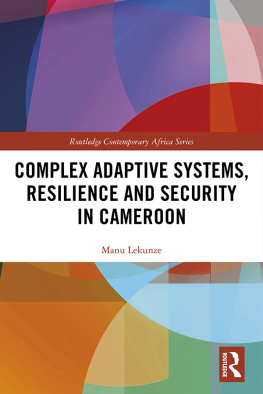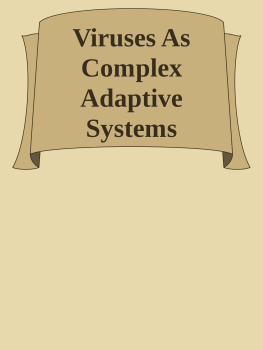Joe Tranquillo
Bucknell University, Lewisburg, PA, USA
ISBN 978-3-030-02588-5 e-ISBN 978-3-030-02589-2
https://doi.org/10.1007/978-3-030-02589-2
Library of Congress Control Number: 2018965173
Springer Nature Switzerland AG 2019
This work is subject to copyright. All rights are reserved by the Publisher, whether the whole or part of the material is concerned, specifically the rights of translation, reprinting, reuse of illustrations, recitation, broadcasting, reproduction on microfilms or in any other physical way, and transmission or information storage and retrieval, electronic adaptation, computer software, or by similar or dissimilar methodology now known or hereafter developed.
The use of general descriptive names, registered names, trademarks, service marks, etc. in this publication does not imply, even in the absence of a specific statement, that such names are exempt from the relevant protective laws and regulations and therefore free for general use.
The publisher, the authors and the editors are safe to assume that the advice and information in this book are believed to be true and accurate at the date of publication. Neither the publisher nor the authors or the editors give a warranty, express or implied, with respect to the material contained herein or for any errors or omissions that may have been made. The publisher remains neutral with regard to jurisdictional claims in published maps and institutional affiliations.
This Springer imprint is published by the registered company Springer Nature Switzerland AG.
The registered company address is: Gewerbestrasse 11, 6330 Cham, Switzerland
Preface
Every book emerges from an authors belief that something is missing. In the case of a scholarly work, it may be a new idea, critical connection, or a deeper exploration. In the case of an educational work, it is that some important topic has not been made sufficiently digestible to those not already in the know. In either case the publication of the work, and whether anyone reads it, is contingent on if something really is missing and if the book fills that hole. I cannot promise that this book fills a gap, but I can explain a bit of the backstory.
Over the course of working with undergraduate students on research projects, I found that I was constantly bouncing new students between literature in neuroscience, game theory, network theory, nonlinear dynamics, and systems theory. The existing texts and articles seemed to be either written as popularizations for the lay audience or were encyclopedias of the entire field (often filled with equations) written for those already in the field. To help my students, I began writing short introductions to each of the areas that surrounded my research area. My selfish intent was to quickly bring them up to speed so that they could read the literature, start forming and answering their own hypotheses, and contribute to my research program.
Around the same time, a few senior faculty sat in on my neural signals and systems course. Every Friday the class would discuss big topics, such as free will, consciousness, neurolaw, or artificial intelligence. So as not to distract the students, the faculty formed their own small discussion group. That group continued on for the next 4 years, meeting every week, and eventually grew to 32 faculty, staff, and administrators. Complex systems readings and topics made many appearances at these informal meetings. After our discussions I found myself jotting down short snippets into a file on my computer.
My scattered notes remained in that file for at least a decade until I had the opportunity to teach a new elective on Complex Systems. Due to a fortunate glitch in scheduling, students majoring in engineering, finance, anthropology, economics, innovation and design, management for sustainability, physics, and biochemistry all signed up. With such a wide range of disciplinary expertise in the room, I made the decision to teach the course using principles from complex systems. For example, the interrelationships between students formed a network in which ideas could bubble up and be passed around. My role was not only to maintain this network as the instructor but also to participate as a student. Discussions encouraged all of us to connect together ideas and experiences from outside of class. Individual writings, class exercises, group meta-reflections, and a few guest discussion leaders made for a very interactive learner-centered environment.
Teaching in this way meant that class time could not be used for lecture. I found it helpful to introduce concepts through reading assignments. My scattered notes began to take some shape. As they did, and through the course discussions, three broad themes emerged, which I thought of as sparks I hoped I would ignite: Curiosity, Connections, and Citizenship. All three are expanded upon in the introduction and should be thought of as muscles that can be exercised while reading the main text. Intentional practice really does help one improve.
The text is not meant to be anywhere near a complete picture of Complex Systems. You will find many holes that will hopefully pique your interest to look at the sources, start your own a discussion group, or visit one of the many complex systems centers. As I often hear from past students, I would love to hear from youwhether it is to correct an issue with the text or to share a new insight or project you are working on. You can find me at www.jvt002@bucknell.edu.
I must give a heartfelt thank you to all of the research students I have had over the years. They were the first readers of this text and helped me more clearly define my audience. I must also thank my many colleagues, especially the members of the Brain, Mind and Culture discussion group who showed me just how far outside of my traditional scientific background complex systems could be applied. A special thanks goes out to George DeMartino, Jim Baish, Mark Haussmann, John Hunter, Tom Solomon, Kevin Meyers, Joe Meiser, Charles Kim, Margot Vigeant, Jason Leddington, Mathew Slater, and Doug Candland. Many of them have read drafts of this text and provided outstanding suggestions. I must also thank Martin Davalos, a graphic design student who made my awful hand-drawn images into works of art. My publisher, and more specifically Michael McCabe, Marta Moldvai, and Charles Glaser, helped give me some much-needed focus and advice throughout the project. I also need to reluctantly thank Wikipedia. As a faculty member, I have been trained to not respect or trust it as a source. But it is an outstanding example of emergence and proved useful in tracking down obscure sources. In fact, you might gain more by reading up on the index terms on Wikipedia than marching linearly through this book. My first class of Complex Systems students struggled through the earliest complete draft of this text and were so patient and forgiving. I know that they taught me more than I taught them. My second class of Complex Systems students kept me honest and made many excellent suggestions on how to improve the readability. I also must thank Green Day, Kate Rusby, Keith Urban, Bach, deadmau5, Dave Matthews Band, Rage Against the Machine, Taylor Swift, Iron and Wine, Clifford Brown, and countless other artists that I listened to while writing and editing. If you press your ears closely to these pages, you might even hear them. Lastly, I must thank my family for bearing with me early in the mornings, on weekends, in the car, on vacation, and at night, while I wrote, revised, and revised some more.










